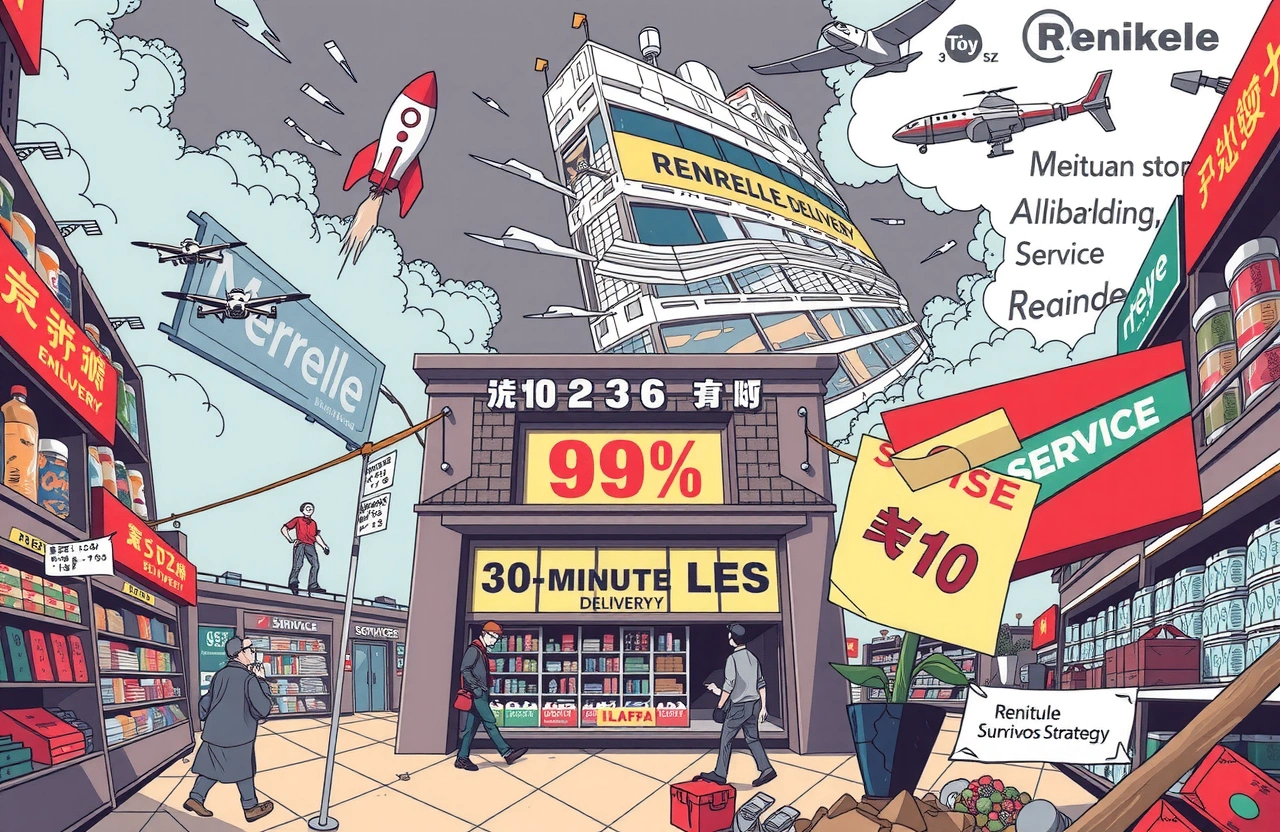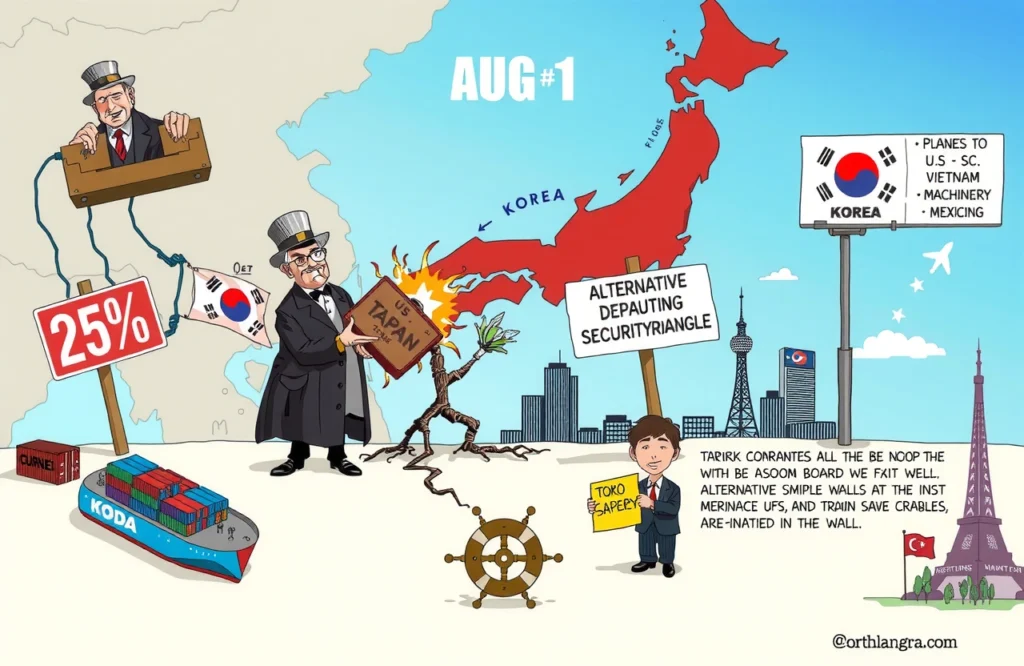The Unraveling of a Retail Giant
Once hailed as China’s “first privately-owned supermarket stock,” Renrenle (002336.SZ) has become a cautionary tale. The company’s delisting from the Shenzhen Stock Exchange on July 4, 2025, marks the tragic endpoint of a 99% market value evaporation. At its 2015 peak, Renrenle boasted a ¥13.7 billion market cap; today, it limped away valued at just ¥158 million.
Founded across major economic regions, Renrenle expanded rapidly to enter China’s Top 100 Chain Stores. Its 2010 IPO was meant to finance 150 nationwide locations – a vision that now lies crushed beneath failed strategies and mounting losses.
The downfall parallels wider turbulence: Carrefour sold Chinese subsidiaries for ¥1, RT-Mart revenues shrank by 1.4% in 2025, and Yonghui supermarket profits cratered 79% last quarter. These collapses expose how changing consumer habits are rewriting China’s retail landscape.
Why Accelerated Expansion Backfired
Renrenle’s aggressive growth proved fatal as market dynamics shifted.
The Expansion Trap
“We chased store numbers obsessively,” confesses Zhang Ming*, a veteran retail executive. “Each location secured felt like territory defended against rivals. But dense networks created internal competition while skyrocketing rents consumed profits.”
Renrenle’s expansion coincided with e-commerce’s explosive growth. Physical retailers struggled with:
– Rental costs increasing 7% annually in tier-1 cities
– Wages consuming 8-12% of revenue
– Shrinkage losses from theft/spoilage
Meanwhile, online competitors leveraged capital subsidies to undercut prices. By 2024, Renrenle’s revenue had halved to ¥1.43 billion with ¥17 million in losses.
The Futile Retreat
From 225 stores at peak, Renrenle executed a desperate contraction:
1. Closed 45 locations in 2024
2. Sold 15 outlets to competitors
3. Operates just 32 stores today
This retreat failed to solve fundamental problems. Margins averaged 0.6% across remaining outlets – insufficient amid rising logistics costs.
*Names changed throughout to protect identities
Three Fronts Changing Retail Warfare
Traditional retailers face triple-barreled disruption.
The Membership Store Threat
Companies like Costco entered China with eye-watering efficiency:
– Low operating costs (10-12% vs hypermarkets’ 22%)
– Private label margins up to 45%
– Membership fees generating pure profit
Discount Format Disruption
Aldi pioneered compact stores achieving:
– Footprint 80% smaller than supermarkets
– Staff reductions of 40-60%
– Prices 15-20% below traditional chains
Sam Walton’s mandate – “always low prices” – now favors discount newcomers.
Delivery Speed Arms Race
June 2025’s instant retail wars between Meituan and Alibaba epitomize the new battlefield. Platforms now deliver within 30 minutes – cannibalizing traditional retail foot traffic. Urban shopper surveys reveal:
– 73% prefer delivery for convenience goods
– 68% cite faster alternatives as reason to avoid physical stores
– Only 32% visit hypermarkets monthly
The Broken Business Model
Renrenle’s implosion followed seven consecutive loss-making years reflecting systemic issues.
Supply Chain Decay
“Developing one successful product takes months,” explains purchasing director Wang Ping. “Testing, factory vetting, and minimum order quantities create cashflow nightmares. We lack volume to negotiate competitive pricing.”
Where discounters achieve 25-30% supply chain efficiencies through centralized distribution, traditional retailers use outdated multi-level wholesaler models adding cost layers.
Aging Formats
Chinese hypermarkets averaged:
– 4% year-over-year traffic decline
– 1.8% sales decrease per square meter
– Only 17% shopper uptake for store-pick e-commerce
The Transformation Imperative
Industry analyst Shen Jun identifies survival pathways:
Service Revolution
Changsha’s Pang Dong Lai supermarket achieves:
– Customer loyalty scores 400% industry average
– Workforce benefits doubling competitors
– Sales densities triple standard supermarkets
through employee-centric policies generating exceptional service.
Hybrid Operations
Walmart China demonstrates effective transformation:
– Store fulfillment for 65% online orders
– Dark stores supporting 30-minute deliveries
– Digital engagement driving 38% mobile penetration
Market Consolidation
Smaller chains will accelerate mergers like Alibaba’s RT-Mart acquisition solving:
– Centralized purchasing scale
– Technology resource sharing
– Combined footprint optimization
The Coming Retail Apocalypse
Industry projections warn:
– Models predict 23% independent supermarkets closing this cycle
– Credit downgrades hit 12 retail chains this quarter
– Debt-to-EBITDA ratios exceeding 5x at struggling operators
Smart hyperscalers now relabel stores as “distribution hubs” amid widespread architectural rethink.
The COVID stimulus-driven consumption bump during 2020-2023 papered over weaknesses; now Darwinian pressures accelerate.
Seven Essentials for Survival
The collapsed giants reveal turnaround prerequisites:
1. Inventory turn rates exceeding 12 annually
2. Private label penetration above 40%
3. Delivery capability within 60 minutes
4. Digital interaction across shopping journey
5. Store footprint consolidation into prime locations
6. Labor costs below 8% revenue
7. AI-driven predictive replenishment systems
Retailers missing three elements face extinction probabilities exceeding 70%. Leaders including Yonghui aggressively implement reforms:
– Closing 35 underperforming locations
– Launching warehouse membership formats
– Building dedicated fulfillment centers
These moves reinforce industry axiom: adapt faster than your customers change.
The fate awaiting laggards? Renrenle’s vacated stock symbol stands as engraved tombstone – market value vaporized, billions lost, dreams dissolved.
Rebuilding Foundations
Pioneering resilience requires painful shedding of legacy thinking.
Combine offline experience strengths with digital convenience. Build provincial supply hubs to bypass intermediaries. Train staff as community consultants rather than checkout operators. For retailers clinging to 20th-century models, Renrenle’s disastrous arc offers urgent instruction:
“The lights will go out unless reconstruction starts today.”




